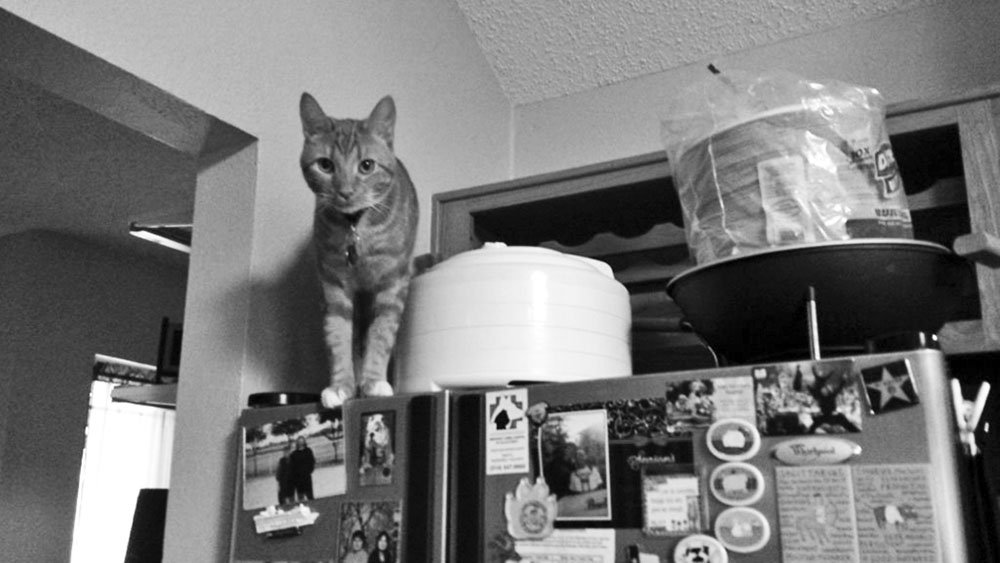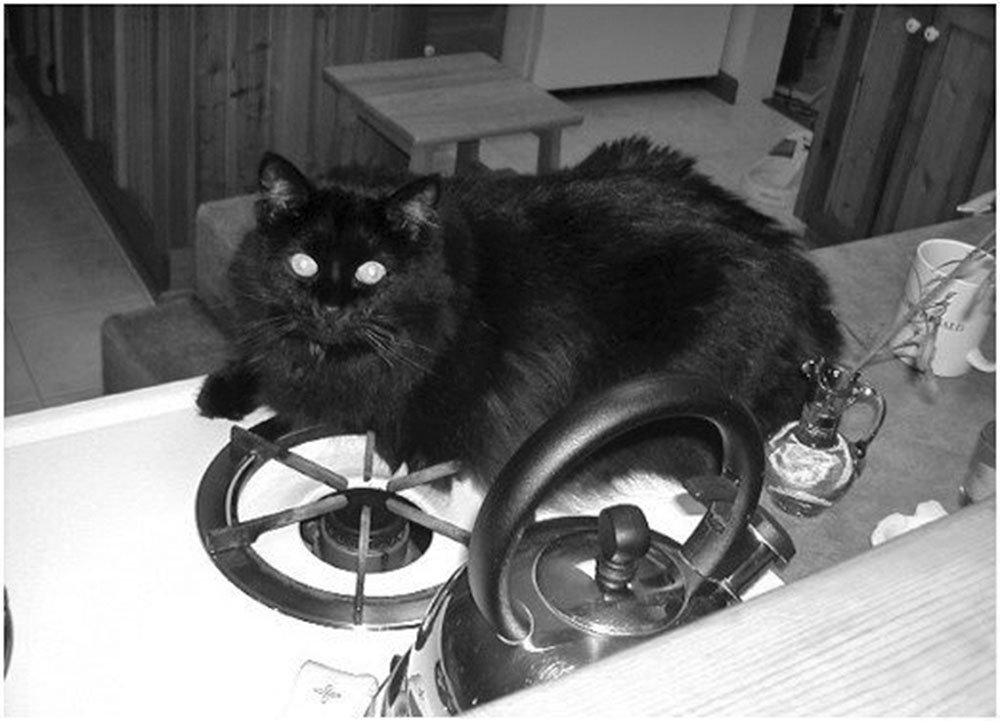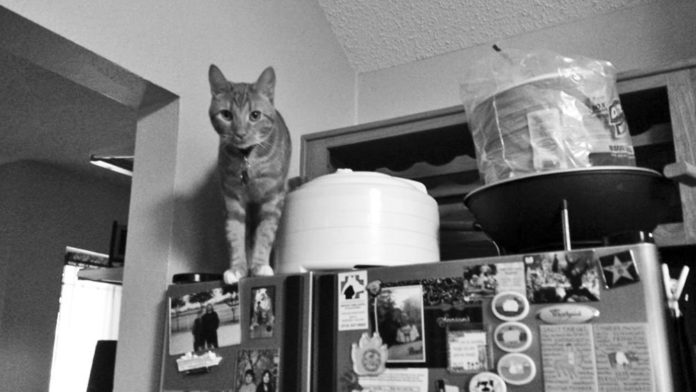Your curious, agile cat effortlessly leaps and lands on the top of the refrigerator, deftly missing your glass serving bowl. Your first instinct may be to scold him, grab his front legs and oust him off the refrigerator.
Such a response could bring you face to face with an angry, frightened cat who may lash out or bite you during the tussle. In your attempt to shoo your cat, he could also lose his balance, falling hard on the floor and injuring himself.
“Anytime a cat is above your head, he has five potential weapons he can use: his mouth and four paws with claws,” says Pamela Perry, DVM, Ph.D., a behavior resident at Cornell University College of Veterinary Medicine. “If you reach overhead to retrieve your cat, he may feel threatened and try to defend himself. Your cat may struggle to wiggle free right at face level, which is dangerous because you could get seriously bitten and scratched.”
Arden Moore

Cats face risks, too. Some are strong enough to topple pans of hot food on the stove and suffer second- or third-degree burns, requiring immediate veterinary treatment.
Do you surrender and allow your cat free reign on high shelves and kitchen counters? Not a safe option. You can outfox your feline, but before you can curb counter and shelf surfing, first understand four of his motivations:
The innate need to explore surroundings from a high perch, out of the reach of dogs or other perceived threats inside the home. “Cats are both prey and predator, so they may feel safer on high places,” Dr. Perry says.
The beckoning aroma of food left on a kitchen counter. Cats have a superior sense of smell compared to ours. “A ham sandwich left unattended on a kitchen counter can be too much of a temptation for a food-motivated cat,” she says.
The opportunity to nap without being interrupted in an inaccessible place. “Your bed may be quite comfortable for your cat but so may the top of the refrigerator. Cats like to have different napping places,” Dr. Perry says.
Leaping and climbing provide physical exercise and outlets for exploring for indoor cats. “Cats are so adept at jumping that the pursuit of vertical high spaces seems intuitive to them,” she says. Although some breeds are noted more for their athleticism than others — say, the gymnastic Bengal versus the more sedentary Scottish Fold — exploring may be a bigger factor in the prevalence of counter surfing and leaping on shelves, Dr. Perry says.
Dr. Pamela Perry

“Younger cats are apt to spend more time on counters and high shelves because they want to investigate their environments. It is how they learn. Older cats, ones who are overweight, and ones with arthritis or mobility problems, are far less likely to do this. Also, older cats tend to be more sedentary and realize it is not worth the effort, especially if food rewards are not left on counters.”
Dr. Perry offers these tactics to cure counter-surfing:
| 1 | Invest in motion-activated canisters that emit bursts of compressed air and put them on favored locations for trespassing. “Cans of compressed air work well because cats hate the noise and the sudden burst of air,” she says. “These products deliver spurts of air consistently, which makes them very effective. They work even when you are not home.” |
| 2 | Put double-sided tape on counters and the tops of kitchen shelves. “This works with a lot of cats who hate the sticky feel on their paws, but there are exceptions,” says Dr. Perry. “My cat, Curly, loved tape and would remove a piece so that he could play with it. |
| 3 | Forget the once-popular notion of filling baking sheets with water and placing them on kitchen counters. “This might work for some cats, but I have had cats who loved water and probably would have put their toys in them,” she says. “And besides, it makes a big watery mess on your counters and kitchen floors if your cat leaps up and spills the baking sheets.” |
| 4 | Tap into your cat’s inner hunter. “If your cat likes to scavenge for food, introduce him to a treat-dispensing cat toy that he can sniff and swat and figure out how to retrieve the pieces of food,” Dr. Perry says. |
| 5 | Keep kitchen counters free of temptation. “By leaving food on the counter, you are unintentionally reinforcing your cat’s desire to leap up there in hopes of finding food. Instead, usher him into a closed room with treats and food toys during mealtimes.” she says. |
| 6 | Redirect your cat’s need to leap and perch up high by providing him with sturdy cat trees or designated wide shelves where he can safely hang out and watch activities at home. She says. “If your cat sleeps on top of the refrigerator, give him a more desirable location such as a comfy cat bed on a window perch.” |
Final advice: If you catch your cat on top of the refrigerator or an off-limit high shelf, call his name, rattle a treat jar and give him a treat once he safely scales down from his perch. The goal is for your cat to learn that tasty rewards occur only when he comes when called. You can even teach him to sit on command before he gets a treat, Dr. Perry says. “It’s always safer for you and your cat to call him off the counter and then reward him with treats for complying.”




